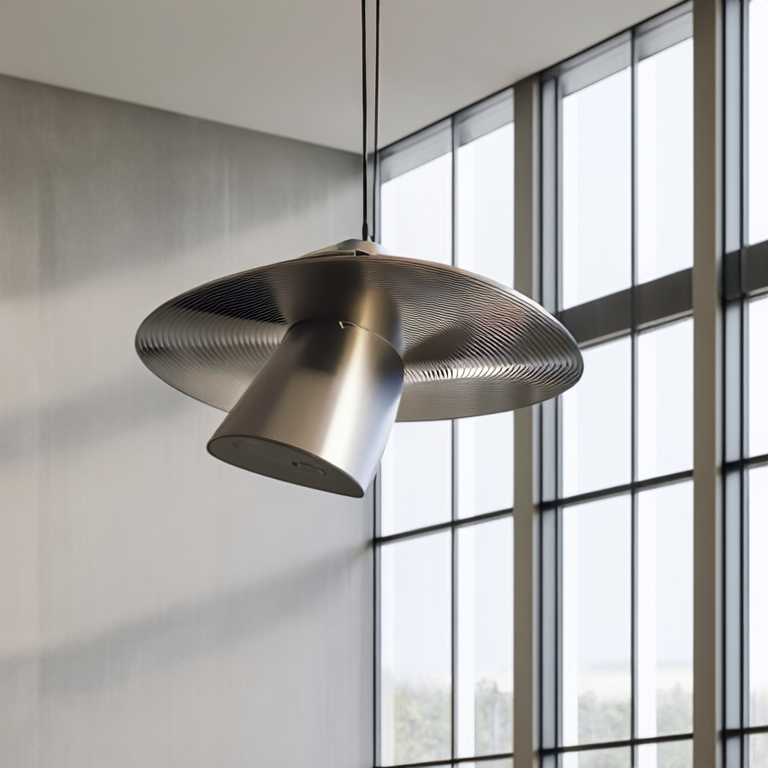Table of Contents
- Flange
- 2. Summary Answer
- 3. How to Choose the Right HVLS Fan
- 4. Conclusion
- 5. FAQ
Introduction
Selecting the right HVLS fan for your warehouse can be overwhelming. Warehouses are often large spaces where temperature control is crucial. High-volume low-speed fans help maintain comfort in these areas. When choosing an industrial large ceiling fan, consider airflow, efficiency, and installation. These factors can significantly impact your operations. A well-chosen HVLS fan can reduce energy costs and improve worker comfort. With the right fan, you can increase productivity and lower humidity levels.

Summary Answer
Choosing the **right HVLS fan involves assessing your warehouse's size, layout, and airflow needs.** Evaluate factors such as fan size, energy efficiency, and installation process before making a decision. Always consider how the fan will impact your overall operational costs and employee comfort.
How to Choose the Right HVLS Fan
1. **Assess the warehouse size and layout**: Understand the dimensions of your space. Large warehouses require larger fans to circulate air effectively. Measure ceiling height and floor layout to determine the best placement.
Tertiary content
An average HVLS fan covers around 20,000 square feet. A fan with a 20-foot diameter is optimal for spaces with high ceilings. This can lead to better air distribution and cooler temperatures.
2. **Evaluate airflow requirements**: Different warehouse operations have unique airflow needs. Consider the activities taking place in your warehouse. Some spaces may need more airflow due to machinery or high employee density.
Tertiary content
Airflow is measured in cubic feet per minute (CFM). A fan with a high CFM rating will distribute air more efficiently across your space. Aim for at least 5,000 CFM for effective cooling in larger warehouses.
3. **Consider energy efficiency**: Select a fan that provides maximum airflow with minimal power consumption. Modern HVLS fans, like those from Windmax Power, are designed for energy efficiency. They often use less electricity while maintaining high performance.
Tertiary content
Energy-efficient fans can save you substantial amounts on your electric bill. Reduced energy usage leads to a quicker return on investment.
Conclusion
Choosing the right HVLS fan for your warehouse is vital for optimizing comfort and efficiency. Evaluate your warehouse size, airflow needs, and energy efficiency. By selecting a suitable fan, you help reduce costs and enhance worker satisfaction. Focus on key attributes like high CFM, low energy usage, and adequate coverage to ensure the best performance. The right HVLS fan can substantially benefit your operations, making it a worthwhile investment.
FAQ
**Q1: How many HVLS fans do I need for my warehouse?**
A1: The number of fans depends on your warehouse size. As a general rule, one fan covers approximately 20,000 square feet.
**Q2: What is the best HVLS fan size for high ceilings?**
A2: Fans with a diameter of 20 feet or more are suitable for spaces with high ceilings to achieve efficient airflow.
**Q3: Do HVLS fans consume a lot of energy?**
A3: No, many modern HVLS fans are energy-efficient, often using less power than traditional fans while delivering better airflow.
**Q4: Can HVLS fans help reduce humidity?**
A4: Yes, HVLS fans can help lower humidity levels by promoting air circulation, making work environments more comfortable.
**Q5: Are HVLS fans noisy?**
A5: Most HVLS fans are designed to operate quietly, providing a comfortable working environment without disturbing noise.
